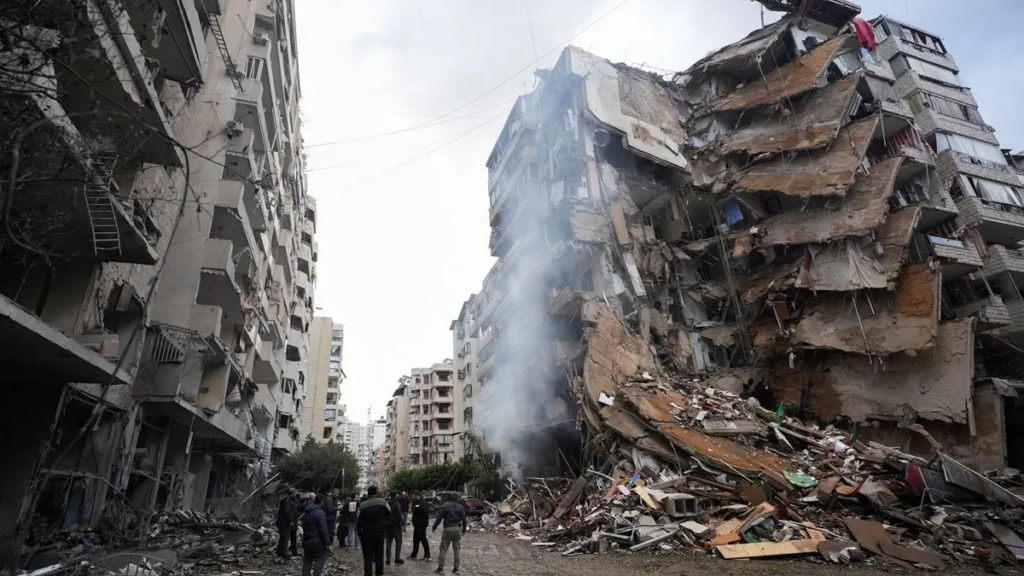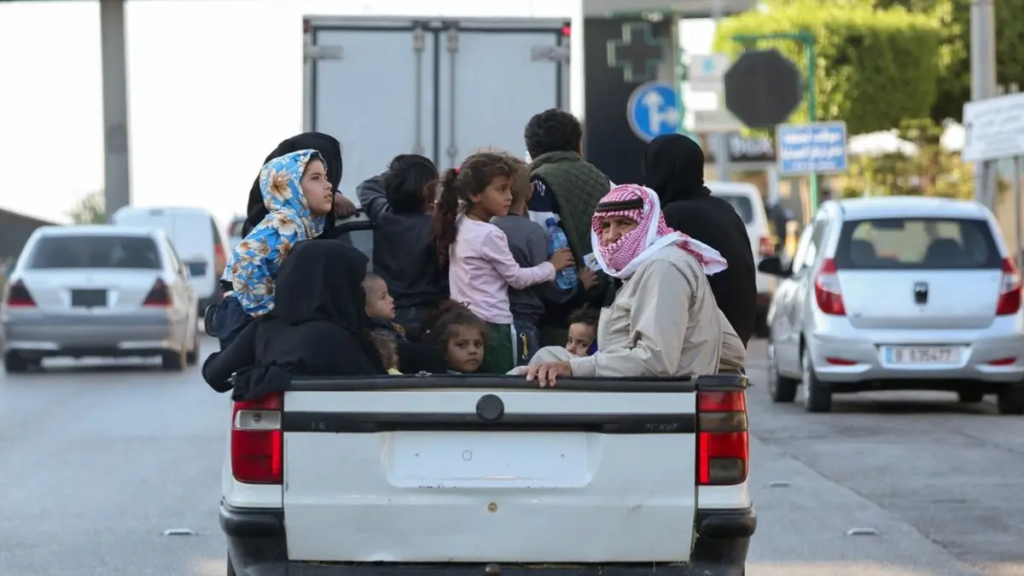A significant chapter in Middle Eastern geopolitics unfolded on Wednesday as a ceasefire between Israel and Hezbollah took effect after 13 intense months of hostilities.
This development marks a crucial turning point for the region, offering hope for stability and a chance for thousands of displaced Lebanese families to return home. While the conflict has taken a heavy toll on both sides, the ceasefire’s strategic implications and future sustainability remain central concerns.
The Journey to Ceasefire: Background and Context
The conflict, which began in October 2023, stemmed from escalating tensions between Israel and Hezbollah, a powerful militant and political organization based in Lebanon.
Hezbollah’s involvement was triggered by its solidarity with Hamas, following the Palestinian group’s October 7 attack on Israel, which ignited the war in Gaza. Over the next year, the conflict saw persistent rocket exchanges and a major Israeli ground invasion into southern Lebanon.
Civilians on both sides bore the brunt of this confrontation, with Lebanon suffering nearly 3,800 fatalities and Israel losing over 120 lives, including soldiers and civilians.
Read : US Rejects ICC Arrest Warrant Against Israeli PM Netanyahu
The ceasefire deal, mediated through international diplomacy and announced by US President Joe Biden, aims to de-escalate violence and bring temporary stability.
Prime Minister Benjamin Netanyahu:
— Prime Minister of Israel (@IsraeliPM) November 26, 2024
"The length of the ceasefire depends on what happens in Lebanon. We will enforce the agreement and respond forcefully to any violation. We will continue united until victory."
Full remarks >>https://t.co/43nIjRoJQv pic.twitter.com/KiwT3ZKcog
Israeli Prime Minister Benjamin Netanyahu outlined three primary reasons behind agreeing to the truce: addressing the broader Iranian threat, replenishing military supplies, and strategically isolating Hamas by neutralizing Hezbollah’s support. These motivations reflect Israel’s long-term security objectives and the intricate geopolitics shaping the conflict.
Impact on Civilians and Regional Stability
As the ceasefire took effect, thousands of Lebanese families began their journey back to their homes in the south, some finding their communities in ruins. The main highway from Beirut saw massive traffic jams, with vehicles packed with families carrying mattresses, personal belongings, and a fragile sense of hope.
The Lebanese army is preparing to deploy 5,000 troops to the southern border region, a critical step in maintaining the ceasefire. This deployment aims to restore order and prevent further incursions, though Israel has warned that certain areas remain unsafe due to the potential presence of unexploded ordnance and other hazards.

For the residents returning, the challenges are immense. Many homes and infrastructures have been destroyed, and essential services disrupted. Humanitarian aid will be crucial in the coming months to support these communities. International organizations are expected to play a key role in facilitating this recovery, ensuring that the ceasefire translates into a sustainable peace.
Strategic Calculations and Future Prospects
Netanyahu’s rationale behind the ceasefire underscores Israel’s broader strategic considerations. By pausing the conflict with Hezbollah, Israel can focus more intensively on the Gaza front and address what it perceives as the overarching Iranian threat.
Netanyahu’s mention of delayed weapons and munitions deliveries highlights another layer of this ceasefire: the logistical and operational necessities of modern warfare. With advanced weaponry expected to arrive soon, Israel aims to strengthen its military capabilities for potential future confrontations.
Isolating Hamas is another critical objective. Throughout the conflict, Hamas relied on Hezbollah’s support as a strategic counterweight against Israeli forces.

By neutralizing this support, Israel aims to weaken Hamas’s operational capabilities, a move that could reshape the dynamics of the Gaza conflict. Netanyahu’s assertion that Israel has “pushed Hezbollah back by decades” reflects a broader narrative of deterrence, seeking to project strength and resolve to other regional actors.
However, the ceasefire’s longevity remains uncertain. Netanyahu’s statements indicate that its duration will depend on the situation in Lebanon, suggesting a conditional truce rather than a permanent peace.
Any violations by Hezbollah could trigger a swift and forceful response, potentially reigniting hostilities. This fragile balance underscores the need for robust monitoring and diplomatic engagement to prevent a relapse into violence.
Challenges and Opportunities
The ceasefire presents both challenges and opportunities for the region. For Lebanon, the immediate priority is humanitarian recovery and political stabilization.
The Lebanese government faces the daunting task of rebuilding war-torn communities and addressing the economic crisis exacerbated by the conflict. The successful deployment of the Lebanese army to the south will be crucial in maintaining security and preventing future clashes.

For Israel, the ceasefire offers a strategic pause to reassess its military objectives and focus on the Gaza conflict. The separation of fronts, as Netanyahu highlighted, could allow Israel to exert greater pressure on Hamas and pursue its goal of securing the release of hostages. However, this strategy carries risks. If Hezbollah perceives Israel’s actions in Gaza as provocative, the truce could quickly unravel.
The international community, particularly the United States, will play a pivotal role in maintaining this fragile peace. President Biden’s involvement in brokering the ceasefire underscores the strategic importance of Lebanon in US foreign policy. Continued diplomatic engagement and humanitarian support will be essential in preventing a resurgence of violence.
The Israel-Hezbollah ceasefire represents a crucial, albeit fragile, step towards stability in a region plagued by conflict. For thousands of civilians returning to their homes, it offers a glimmer of hope amidst the devastation.
However, the sustainability of this peace will depend on continued diplomacy, effective enforcement, and a commitment to addressing the underlying issues driving the conflict. As the region moves forward, the lessons of this ceasefire will shape the future of Middle Eastern geopolitics.
let’s enjoy few years on earth with peace and happiness….✍🏼🙏

